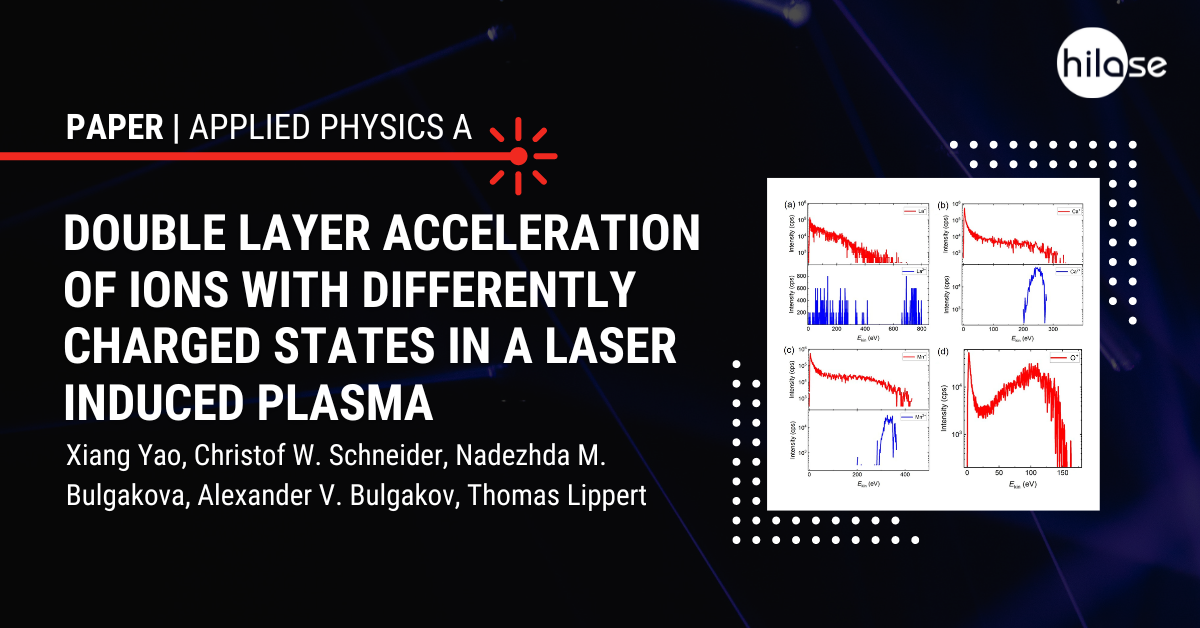Nadezhda M. Bulgakova (head of Scientific Laser Applications) and Alexander V. Bulgakov (team leader of Nanomaterials) contributed to a recent publication titled Double layer acceleration of ions with differently charged states in a laser induced plasma.

The paper was published in the Applied Physics A journal, which focuses on sharing experimental results from the fields of applied physics and materials science. The two HiLASIANS collaborated on this study with Xiang Yao, Christof W. Schneider and Thomas Lipper from the Paul Scherrer Institut, Switzerland.
The electric field driven acceleration of plasma ions is an intrinsic effect in laser-induced plasma plumes and is responsible for the generation of high-energy ions. At high laser fluences (≥ 2 J/cm2), multiply charged ions are formed and affect the plume expansion dynamics. In this paper, we used kinetic energy-resolved mass spectrometry to investigate the relative abundance and kinetic energy distributions of singly- and doubly-charged ions produced by KrF-laser ablation of nine different oxide targets. The doubly charged metal ions with a lower mass-to-charge (m/z) ratio show narrow energy distributions at high average kinetic energies coinciding with the cutoff energies for the singly-charged ion distributions. The observation suggests that the recombination of higher charged ions plays a prominent role in the formation of the high-energy tail for singly-charged ions. The results are discussed in terms of component volatility and a dynamic double layer, where ions with different m/z values experience different accelerations.








